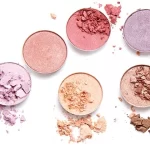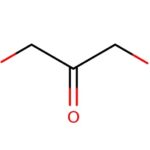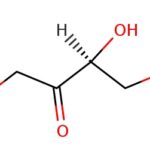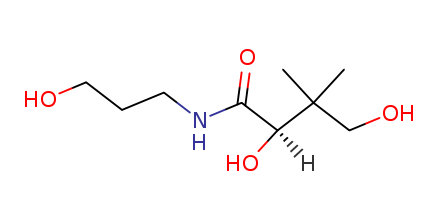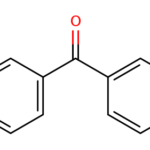Introduction
N hydroxyoctanamide is a kind of organic acid with strong chelating ability to metal ions, so it is often used as a trapping agent in the field of mineral flotation, and also found to be added to animal feed as a growth promoter. N hydroxyoctanamide is widely used in daily chemical, pharmaceutical, industrial and agricultural fields. In the field of daily chemical, N hydroxyoctanamide, as a new type of preservative, solves the following problems of traditional preservatives: such as the potential carcinogenicity of formaldehyde and the existence of released bodies, the potential carcinogenicity of nitrosamines produced by Brobdal, the potential allergenicity of organohalogens, and the hormonal irritation of nipagin esters.
In the industrial field, N hydroxyoctanamide can be an efficient trapping agent for non-sulfide ores and used for flotation extraction of tungsten ore and tin ore, etc. In the agricultural and pharmaceutical fields, N hydroxyoctanamide can be used as urease inhibitor, etc.
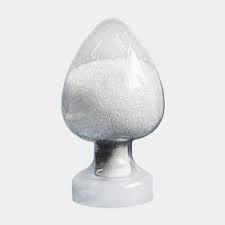
Manufacturing process
- Add hydroxylamine hydrochloride into the reactor, add alcohol solution and stir to dissolve;
- Add octanoate into the reactor and stir to mix well; then add 4-dimethylaminopyridine and add solid base, control at 5℃-15℃, adjust the solution in the reactor to pH 5.0-6.5;
- Control the solution at 20℃-40℃ under normal pressure, react for 1-3 hours, cool to -10℃-0℃ after finishing. 0℃, filter sodium chloride or potassium chloride, vacuum concentration, cooling crystallization, centrifugal separation, to obtain the crude product;
- The crude product will be recrystallized in the solvent, dried to obtain the N hydroxyoctanamide content of 99% or more.
In this manufacturing process, the raw materials used are easy to obtain, the reaction conditions are mild, and the danger of decomposition and explosion caused by high temperature of hydroxylamine is well solved, the reaction medium is alcohol-water system, which is safe and inexpensive, and can be used repeatedly, which greatly reduces the production cost, and is easy to industrialize production and market promotion.
Application for bacterial inhibition
N hydroxyoctanamide is an ideal organic acid for bacterial inhibition. It has an efficient and selective chelating ability for divalent and trivalent iron ions, and limited growth of mycobacteria in iron ion-restricted environments. It also has the optimal carbon chain length that can promote the degradation of cell membrane structure. Therefore, it has strong antibacterial ability and is a new type of preservative replacement substance.
N hydroxyoctanamide has strong fungal inhibitory effect, and its inhibition principle is that CHA has efficient selective chelation of Fe2+ and Fe3+. The growth of mycorrhizal fungi is restricted in the environment where iron ions are restricted. Iron is a key element for microbial growth, and microorganisms release chelating agents (siderophores) that capture Fe3+ from the environment and convert it to Fe2+. CHA chelates Fe3+ with a high stability constant, which prevents mold from acquiring iron, and it remains effective at a neutral pH, making it an ideal organic acid for fungal inhibition.
Application for cosmetics
In recent years, N hydroxyoctanamide has been more and more widely used in cosmetics. Besides being used as a chelating agent in cosmetics, it is also used as a tyrosinase inhibitor in whitening products and even widely used as a preservative synergist in cosmetics.
Synergistic antibacterial properties in cosmetics
The antibacterial properties of N hydroxyoctanamide can be traced back to the invention patent CN 102920612A by Xu Jinrong et al. in 2012, which disclosed a broad-spectrum antibacterial cosmetic preservative. The content of N hydroxyoctanamide is 8-12%, which can effectively inhibit Gram negative and positive bacteria, molds, and yeast, and the antibacterial properties are not affected by surfactants, proteins, and Chinese herbal additives in cosmetics. In recent years, it has been widely used in cosmetics due to its antibacterial properties.
The use of octyl hydroxamic acid in cosmetics
In 2019, the US Food and Drug Administration’s VCRP data showed that there are currently 227 formulas containing N hydroxyoctanamide, which is used in eye products, lip products, baby products, washing products, and mucosal contact products. There are many cases in public literature where N hydroxyoctanamide is used in combination with other preservatives, and the combined anti-corrosion system is applied in various formulations. The research shows that N hydroxyoctanamide can be compounded with other preservatives to play a synergistic role when used in a small amount. Li Xinhang and others selected 0.056% N hydroxyoctanamide to be compounded with ethyl hexyl glycerol and glycerol octanoate, and conducted a comprehensive evaluation of the compounded anti-corrosion system through the anti-corrosion challenge test and allergic patch test. The results show that the anti-corrosion system can be used in cosmetics, O/W lotion, O/W cream The W/O cream formula has good antibacterial properties and is gentle and non irritating. Zhang Han et al. studied the microbial challenge test of N hydroxyoctanamide and glycerol octanoate compound bacteriostatic agent in five cosmetics formulations, including water, cream, gel, shampoo, and hair care, and found that the compound bacteriostatic system has a good antiseptic effect. Through the chicken embryo chorioallantoic membrane blood vessel test of the facial mask essence containing the antiseptic system, the results showed that there was no injurious stimulation, at this time, there was no bleeding injury to the capillaries; The result of 0.1% MIT facial mask essence solution is a relatively serious injury stimulus, at this time, the capillary appears a relatively serious bleeding injury. According to other literature reports, the antibacterial effect of a new compound moisturizing preservative composed of ethyl hexyl glycerol, glycerol octanoate, 1,2-hexanediol, N hydroxyoctanamide and 1,3-propanediol in skin care products such as water, lotion, facial mask, cream, etc. was explored. The results showed that the application of the compound antiseptic system in cosmetics with different dosage forms can show good antibacterial effect. Among them, The final dosage of octyl hydroxamic acid added to cosmetics is 0.045% -0.063%, which can achieve synergistic effect with other preservatives. US patent numbers 110351523 and 10407528 also mention the use of octyl hydroxamic acid or a mixture of octyl hydroxamic acid and glycerol octanoate as a preservative in sunscreen formulas.
The safety issues of cosmetics containing N hydroxyoctanamide
The safety of N hydroxyoctanamide, whether used as a chelating agent or a preservative in cosmetics, has also received great attention. As early as 2012, the National Industrial Chemicals Notification and Assessment Agency (NICNAS) in Australia conducted an assessment of the human health risks of N hydroxyoctanamide. The Bovine Corneal Opacity and Permeability (BCOP) test was used to test a 20% solution of N hydroxyoctanamide. Under the test conditions, N hydroxyoctanamide was not considered corrosive or severely irritating. Through EpiOcular™ The corneal model also proves that 100% N hydroxyoctanamide is a substance with minimal or no eye irritation. Two in vitro eye irritation experiments have shown that N hydroxyoctanamide has no eye irritation. The content of N hydroxyoctanamide in the compound preservative mentioned in Chinese patent [4] CN 102920612 A is 8-12%. The Draize test shows that when the dosage is 1.2%, the acute eye irritation to rabbits is micro irritant, but it cannot be determined whether it is the N hydroxyoctanamide in the preservative or Phenethyl alcohol. For this product, Xu Jinrong et al. also conducted acute skin irritation tests, which showed that a single contact of the sample with rabbits did not cause skin irritation. In June 2019, the American Cosmetic Ingredient Assessment (CIR) also released the draft of Safety of N Hydroxyoctanamide for Cosmetics. Although no final conclusion has been reached, many experimental data deserve attention. Apply N hydroxyoctanamide to EpiDerm reconstructed with Keratinocyte ™ On the skin model, according to standard OECD TG 439, N hydroxyoctanamide was classified as a non irritant substance.
At present, there are no reports of Contact dermatitis and other adverse reactions caused by the presence of this substance at home and abroad, except that Finland has disclosed a Contact dermatitis caused by Apobase containing N hydroxyoctanamide. CIR collected multiple reports and results of the Human Repetitive Injury Patch Test (HRIPT) using N hydroxyoctanamide. The test concentrations ranged from a minimum of 0.105% to a maximum of 100% undiluted N hydroxyoctanamide powder. The volunteers also ranged from 52 to 109. During the test, it was observed that some volunteers had scattered, transient, and almost unobservable mild erythema on their skin, with occasional edema; The researchers stated that when tested in the same way, the number and degree of positive reactions were not directly proportional to the dilution concentration. The HRIPT test results show that N hydroxyoctanamide is not a stimulant or sensitizer.
NICNAS calculated the exposure boundary value (MOE) by assuming that a 60 kilogram woman is exposed to 15 types of persistent and washable cosmetics every day, which contain certain concentrations of N hydroxyoctanamide and NOAEL. It was found that the highest concentration of N hydroxyoctanamide used in cosmetics does not cause safety issues when it does not exceed 0.3%.
Summary
With the increasing demand for cosmetics, safety and low stimulation have become the basic elements of cosmetics, while substances with high stimulation, high risk, and low safety will gradually be replaced and eliminated. N hydroxyoctanamide is not included in the list of preservatives or other prohibited or restricted lists, both domestically and internationally. Therefore, it is subject to certain restrictions when listed as a preservative in domestic cosmetics registration, and there are few reports on its safety in China. Studies have shown that N hydroxyoctanamide has no eye irritation, skin irritation, or potential sensitization. Although it is difficult to achieve good antibacterial effects when used alone, it can effectively inhibit microbial growth when used in combination with low irritant substances such as ethylhexyl glycerol and glycerol octanoate from the same natural source; When used in combination with traditional preservatives, it can effectively reduce the dosage of traditional preservatives, thereby reducing overall irritation, and effectively solving the safety issues of cosmetics. It has a broad application prospect in cosmetics.






